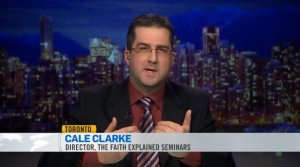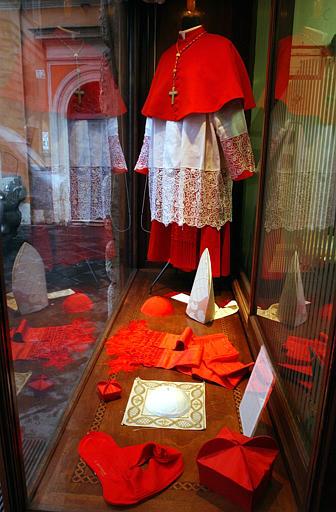
So, where were you when you heard the news? The white smoke billowed from the Sistine’s chimney. Hundreds of thousands filled the piazza of St Peter’s. Bells ringing. The announcement: “Habemus Papam!” We have a Pope! The buzz of anticipation…who would it be? Almost everybody was wrong, as usual, including this scribe. Finally, a roar goes up from the crowd as the crimson curtains open…and there he is! Pope Francis!
I was in the Philadelphia airport. By God’s grace, I happened to have a one-hour stopover before boarding a connecting flight. It just so happened that during that time, the terminal TV, tuned to CNN, showed the white smoke, signalling the happy news…and I had just enough time to see Pope Francis emerge onto the balcony and make his first remarks as Pontiff before catching my next flight.
It was very interesting to overhear the comments being made by folks gathered around the screen at Gate 44. Some of them made snide remarks about the Church. Some appeared to be believers who were genuinely excited about the news. Others were just plain curious. But everybody was watching. It goes without saying that every major news network and media outlet interrupted all programming to report live from the Vatican. So much for the Church being irrelevant in the modern world. It was the story – the only story – at that moment on planet Earth.
There were a gaggle of pilots, stewardesses, and US Airways personnel watching. As the accoutrements – the papal banner, etc. were being laid out over the balcony railing, one pilot remarked: “What’s with all this stuff? Jesus never would have had all this fuss about him, as he walked the dusty roads of Galilee.” A common enough complaint about the ceremonial nature of the papacy. There is, of course, an answer for that, but that’s another article for another day. But the best response was provided by humble Pope Francis himself.
The Legend of Pope Francis was only beginning then. By now, you know most, if not all, of what I’m about to tell you. But, at that moment, most of us watching were discovering in real-time that: 1) As Archbishop of Buenos Aires, Jorge Mario Bergoglio had sold the opulent Archbishop’s palace and given it to a cash-strapped order of nuns; 2) He had moved himself into a simple flat, and, having fired the Archbishop’s cook, made his own simple meals; 3) He had canned the Archbishop’s limo and driver, opting instead to take the bus to work. Anyone in Buenos Aires who wanted to meet their Cardinal Archbishop only had to hop onto public transit to obtain a rolling, face-to-face meeting; 4) He would venture into the most depressing, drug-addled slums of the city, and sip mate tea with the residents from a common straw; 5) God began to call him to the priesthood after his childhood sweetheart broke his heart; and on and on one could go.
As Pope, Francis has already managed to drive his security detail batty, by wading into the waiting crowds outside after celebrating Mass, eschewing papal limousines in favor of – you guessed it – riding the bus with the cardinals, or even walking to his next appointment, as he did before greeting all the journalists in Rome at the Paul VI auditorium the other day. Some of his friends in Argentina noticed his shoes were in rough shape before the conclave and bought him a new pair. Good thing. He’s still wearing them, eschewing the red and brown pairs that were available for him in the “room of tears”, where he changed into the white cassock for the first time. He decided not to don a golden pectoral cross reserved for the Bishop of Rome, rather keeping the iron cross he had worn as archbishop (and he will need that kind of “mettle” for the battles ahead). He had purchased a return ticket to Buenos Aires before the conclave began, not at all anticipating that he would be the chosen one. He insisted on paying his own hotel bill, out of his own pocket, and collecting his own things. A Pope who runs his own errands. His white dress shirt can be seen partially untucked underneath his cassock. This is a Pope who will never see the word “clericalism” written beside his name!
Indeed, his humility was apparent, even palpable, to all as he stood on the balcony last Wednesday at St Peter’s (The Pope Emeritus was plenty humble, too, lest we forget. No one willingly gives up the papacy unless he is detached from everything except Christ himself). I had never seen Jorge Mario Bergoglio before, except in pictures. Up until that moment, I suppose in a sense I had been looking at this conclave in a bit of a clinical manner, having been asked to comment on it for various news outlets. Of course, intellectually, I knew that I, along with all Catholics, would love the new Holy Father, whoever he might be, as much as we had Benedict and John Paul II. But I couldn’t help getting choked up as I saw Pope Francis on the balcony – just standing there. No wild waving to the crowd (although that would have been fine). Just standing there. Instantly, one could sense his deep sense of inner peace, and his humility. As he remarked to the gathered journalist in the Paul VI hall on Saturday, “Christ is the centre, not the successor of Peter”. He knew that, ultimately, the reason those multitudes were there to greet him was because they are seeking Christ – as is every person, wether they know it or not. And Christ has given us his Vicar, the Pope, to help us find him.
Long live Pope Francis. Viva il Papa!


 Hi Everybody, just a note to let you know you can watch the interview I had tonight with Scott Laurie of CTV News about all things papal online
Hi Everybody, just a note to let you know you can watch the interview I had tonight with Scott Laurie of CTV News about all things papal online 